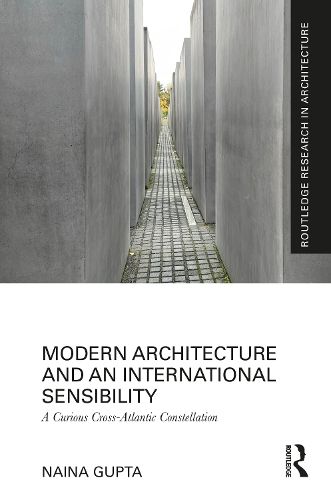Readings Newsletter
Become a Readings Member to make your shopping experience even easier.
Sign in or sign up for free!
You’re not far away from qualifying for FREE standard shipping within Australia
You’ve qualified for FREE standard shipping within Australia
The cart is loading…






Modern Architecture and an International Sensibility: A Curious Constellation presents an alternative history of internationalism and modernism, with a specific focus on the role of architecture and spatial practices.
Beginning at the tail-end of the peace movements - the turn of the twentieth century - and ending with the Nuremberg trials, the book highlights the part played by individual agency, social reform and architecture in moulding a working everyday-definition of what it meant to be international during this time. By viewing internationalism through the lens of the individual and the body, both as initiator and subject, it is repositioned as an integral part of the everyday life, rather than simply understood to be concerned with geopolitical relations between nations and their institutions.
The book furthers a research methodology that is multidisciplinary and transnational, it will therefore be of interest to researchers and students of architecture and international history.
$9.00 standard shipping within Australia
FREE standard shipping within Australia for orders over $100.00
Express & International shipping calculated at checkout
Modern Architecture and an International Sensibility: A Curious Constellation presents an alternative history of internationalism and modernism, with a specific focus on the role of architecture and spatial practices.
Beginning at the tail-end of the peace movements - the turn of the twentieth century - and ending with the Nuremberg trials, the book highlights the part played by individual agency, social reform and architecture in moulding a working everyday-definition of what it meant to be international during this time. By viewing internationalism through the lens of the individual and the body, both as initiator and subject, it is repositioned as an integral part of the everyday life, rather than simply understood to be concerned with geopolitical relations between nations and their institutions.
The book furthers a research methodology that is multidisciplinary and transnational, it will therefore be of interest to researchers and students of architecture and international history.